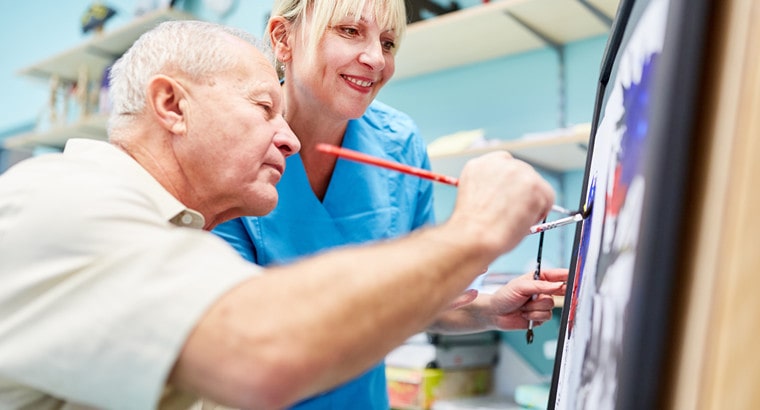Nursing care for patients is commonly delivered as the plan prescribes based on the medical treatment the physician/doctor prescribes. Across the ages, music therapy, art therapy, and other active art forms have been identified to provide multiple therapeutic benefits. In specific cases, non-conventional approaches have been found to provide therapeutic benefits to patients and families.
What is art therapy?
Art therapy is a kind of psychotherapy that uses art as a communication medium. The “art” in art therapy activities can be sketching, drawing, coloring, painting, collage making, or clay modeling.
In a broader meaning, art encompasses music, dance, singing, instrument playing, knitting, embroidery, and many other forms. Art therapy is based on the creativity shown by the patient through which they may express feelings and emotions beyond description and reveal what the patient is going through.
Art therapy does not require any prerequisite in artistic skills. This is a powerful tool for nurses to provide holistic patient care. The healing agent in art therapy is the patient’s creativity, which offers insights into the patient’s condition beyond the rational mind, which the nursing therapist uses to promote healing.
Background of art therapy
Art’s therapeutic value has been found depicted in the history of every culture. It has been in use for centuries for patients suffering from specific conditions but has gained the limelight in the last century. Patients can express themselves or talk about their suffering through art, which they cannot do otherwise.
The main idea of art therapy is to utilize art and the creativity of the patient in art as a form of expression, especially for things that might be difficult to express verbally.
The potential of art therapy in healing
Art therapy has been found to have great potential as a therapy to supplement and complement conventional nursing health care. Here are some possible potential applications.
Burns, grief, trauma, addictions, eating disorders, anxiety, pain, fears, and chronic illness are some of the conditions where art therapy is effective.
Creating physical objects with dough or clay boosts physical and psychological healing and gives more input to the therapist.
The colors in the artwork indicate the patient’s emotions, feelings, and mental condition, which assists nurses in learning about the patient and in providing better support to them.
Art therapy: A healing tool for nurses
Nurses can play an important role in implementing art therapy for giving all-inclusive health care by exploiting the healing power of art, especially in today’s fast-paced, computerized society. Art therapy can be effectively used with conventional healthcare to improve treatment effectiveness.
Nurses can choose art therapy as their mode of connecting with their patients. An online second degree nursing program from Holy Family University can accelerate the student’s path to the nursing profession. It is a 14-month program with full coursework available online and one on-campus residency.
To harness the healing potential of art therapy along with routine nursing care, nurses must get familiar with the art, art forms, and how to use them for therapeutic patient care. Nurses will assess the patient’s understanding of art therapy, explain its use and benefits, and tap into their enthusiasm.
After implementation, a nurse must evaluate the patient for condition improvements and physiological changes, such as decreased BP, heart rate, etc.










